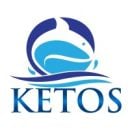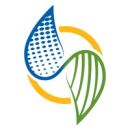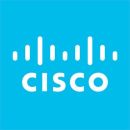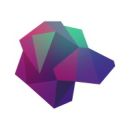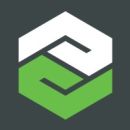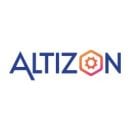Big data is helping to make sense of the billions of real-time data points collected by Internet of Things (IoT) devices, organizing information — on anything from traffic patterns to home efficiency information — into digestible datasets that inform companies on how to optimize their processes.
What Is IoT in Big Data?
Data is collected by IoT devices (like sensors and smart-home products) and organized into digestible datasets that inform companies on how to optimize their processes.
How IoT Data Works
IoT devices are used in a wide range of businesses and industries, which result in large quantities of diverse data. Most IoT devices are able to collect data from their environment, like smart speakers listening to commands or industrial drones collecting data on crop conditions. The collected data is fed back to corporate servers where businesses can use it in countless ways.
Companies may choose to only use the data at the time of collection — to map the weather in real time, for example — and immediately discard it after use. Companies could also store the collected data so they can analyze it later. Either use case can be considered to be dealing with big data. There is no one way of handling IoT data, just as there is no single way to create an IoT device.
IoT and Big Data Use Cases
Fintech
Banks and insurance companies use IoT and big data technologies to detect fraudulent activities and make more accurate decisions when trading at a rapid pace.
Logistics
Big data and IoT enable logistics companies to determine the most efficient way for transporting inventory and assessing the impact of variables like transportation and weather, as well as gather IoT data from sensors attached to cargo they want to track.
Agriculture
IoT and big data provide real-time insights into weather conditions, soil moisture levels, nutrient levels and other variables farmers need to track on a daily basis, usually through IoT sensors attached to tractors, drones and other equipment.
Healthcare
With a network of IoT devices, healthcare organizations exchange patient information and keep electronic health records up to date, while IoT wearables used by patients allow medical professionals to monitor their health without in-person visits.
Education
Teachers compile IoT data on student behavior when they complete online assignments, using it to see the areas students struggle and excel in and restructuring their courses to meet student needs. Mobile apps and games also allow teachers to better engage their students while compiling data to see what questions and topics stumped students.
Manufacturing
The Internet of Things connects various machines on the same network, enabling manufacturers to collect real-time data on all their equipment. They can use this data to monitor the health of machinery and predict when different machines will need maintenance.
E-Commerce and Retail
Combining IoT and big data, retailers track customers’ in-store movements via sensors to learn where they spend most of their time — and customize deals accordingly.
Energy
Smart grids rely on IoT ecosystems to keep generators, user devices and other equipment on the same network. This interconnectedness lets energy companies gather real-time IoT data analytics on energy consumption and demand levels, so they can distribute electricity in a cost-efficient manner.
Benefits of IoT and Big Data
Business Intelligence and Decision-Making
IoT devices compile in-depth data via sensors, and big data analytics processes this IoT data to produce real-time insights. Businesses can then determine important industry and company trends, informing how they adjust their growth strategies.
Operational ROI
With big data tools sifting through IoT data, companies can save valuable time while relieving teams of this tedious task. Employees can then focus on other issues, making a company’s everyday operations more efficient.
Predictive Analytics
Companies can use big data analytics to decipher patterns from IoT data, piecing together future trends. Businesses can then make predictions on industry events, annual profits and other factors, adapting their approach to changing circumstances.
Risk Forecasting
Analyzing IoT data with big data tools lets companies conduct better risk forecasting. Leaders can assess whether variables like business revenue and customer growth are trending downward, then redistribute resources to compensate for any shortcomings.
Customer Behavior Analysis
IoT ecosystems compile information on how customers interact with digital products while big data tools break down IoT data into digestible formats. Analyzing this data, businesses can tweak product features to cater to customers’ preferences.
IoT Data Examples
IoT Data in Agriculture
The use of IoT devices is a natural fit for this industry, which relies heavily on carefully monitoring a large number of factors to optimize harvests and reduce spoilage and waste. Monitoring is traditionally done manually, but IoT devices have the potential of making monitoring easier and more consistent, especially on large farms. IoT devices can be applied to a wide variety of tasks across every aspect of the agricultural process.
Founded: 2015
Location: Milpitas, California
Main product: KETOS SHIELD platform
How it uses IoT data: KETOS supports farmers who want to preserve their water quality and develop more sustainable practices. The company’s SHIELD platform comes with an IoT sensor system, which can collaborate with third-party platforms to gather data on water samples. Because KETOS’ platform automates water sampling, farmers gain real-time insights that inform them whether they’re in compliance with EPA standards.
Founded: 2006
Location: San Francisco, California
Main product: Climate FieldView
How it uses IoT data: With The Climate Corporation’s FieldView software, users can collect and store data about their fields and even transfer historical data to or from other platforms and equipment manufacturers. The company’s related FieldView Drive connects farm equipment to an iPad via Bluetooth so users can collect and store data that’s pertinent to crop planting and maintenance. Other field data can be gleaned via monitors dubbed Precision Planting 20/20 SeedSense and Precision Planting YieldSense.
Founded: 2016
Location: Creve Coeur, Missouri
Main product: TrueCause
How it uses IoT data: Aker Technologies’ TrueCause device helps farmers monitor their fields with machine learning software and drone technology. Drones compile field data on factors like crop health, yield potential and soil quality, so farmers can order only necessary resources and prescriptions. With IoT data analytics, TrueCase can also detect weeds, diseases and other issues, so farmers can quickly develop remedies to protect their crops.
Data Analysis and IoT Infrastructure
Once data flows in from IoT devices, the infrastructure has to be in place to analyze it. That infrastructure can be built internally or provided through an external service, but ultimately it enables a company to gain important insights and turn data into useful information.
Founded: 1984
Location: San Jose, California
Main product: IoT Control Center
How it uses IoT data: Cisco’s IoT Control Center makes it easy to connect and distribute devices by automating a range of processes for different business scenarios. The platform relies on artificial intelligence and machine learning to locate problems with devices and provide timely notifications. Companies can add an additional layer of security by giving access to only authorized users, keeping their IoT data secure.
Founded: 2012
Location: New York, New York
Main product: Location intelligence platform
How it uses IoT data: Carto’s location intelligence platform helps companies and cities harness the power of location data to make decisions based on factors such as public transportation shutdowns and storm damage. In the case of IoT data analytics, Carto’s platform can connect devices across smart cities to help local leaders improve energy management, waste collection and traffic infrastructure.
Founded: 2017
Location: Denver, Colorado
Main product: HarperDB’s distributed database
How it uses IoT data: HarperDB’s IoT enterprise database solution was built to handle big data with the ultimate goal of helping companies learn more about their physical assets by directly collecting and analyzing data in real-time. The company’s database is able to replicate data and share it globally, even without a steady network connection. This structure makes it easier to deliver real-time insights across the world, supporting companies in industries like gaming, media and travel.
IoT Data in Logistics and Planning
Logistics is another industry where IoT adoption can provide a significant competitive advantage. In an industry that tracks items around the world, IoT devices allow companies to monitor shipments in real time and incorporate data on route conditions into decisions that can save a lot of time and money.
Founded: 2014
Location: Boston, Massachusetts
Main product: Experfy’s upskilling platform
How it uses IoT data: An on-demand consulting and training marketplace, Harvard innovation lab Experfy currently offers training on many applications of IoT, including courses on smart manufacturing, cybersecurity and even one targeted at business executives. This way, the platform can pair businesses with potential candidates who have the skills and background knowledge to fill specialized roles.
Founded: 2015
Location: Boston, Massachusetts
Main product: Tive’s analytics platform
How it uses IoT data: Tive’s cloud platform employs cellular trackers so users can keep tabs on a shipment’s location and condition in real time via an array of connected devices. That includes the tracking of high-value goods and monitoring the condition of chemicals and damage from handling. Users can also receive damage alerts for electronics shipments, avoiding port delays and much more.
Founded: 1907
Location: Atlanta, Georgia
Main product: UPS Premier
How it uses IoT data: UPS has outfitted its massive delivery fleet with sensors that each record hundreds of data points. The result is less fuel consumption and a diminished impact on the environment. Under its healthcare umbrella, UPS also provides a premier service that leverages IoT sensors to give customers the option of setting their packages as higher priority, personalizing their tracking visibility and receiving 24/7 monitoring.
IoT Data in Operations Monitoring
IoT devices are also used for monitoring business operations, which works especially well in industries that incorporate manufacturing or need to keep track of physically measurable components. Using IoT to monitor can ease the strain on employees and help companies streamline their processes.
Founded: 2015
Location: San Francisco, California
Main product: Connected Operations Cloud
How it uses IoT data: Samsara builds software and hardware products that allow organizations to stay connected to their fleet vehicles and heavy machinery and monitor important real-time data. The company helps businesses streamline their operations by offering tech solutions that support preventative maintenance, for example, and facilitate AI-powered driver coaching. Samsara has IoT solutions for a broad range of industries, including construction, utilities, logistics, passenger transit and education.
Founded: 2011
Location: San Ramon, California
Main product: Proficy Smart Factory
How it uses IoT data: GE Digital helps companies envision and realize a more efficient factory with its Proficy Smart Factory systems. While Proficy Plant Applications monitors automated tasks and gathers data, Proficy Orchestration Hub verifies and distributes the latest product manufacturing updates. As a result, businesses can develop more cost-effective and streamlined processes without sacrificing the quality of their products.
Founded: 1985
Location: Boston, Massachusetts
Main product: ThingWorx platform
How it uses IoT data: PTC equips manufacturers with the ability to monitor and improve their processes, thanks to ThingWorx. This Industrial IoT platform connects devices and compiles data with a suite of applications, allowing businesses to gain a holistic view of their operations. This way, manufacturers can receive faster IoT insights and make changes that ramp up production and increase revenue.
Founded: 2013
Location: Palo Alto, California
Main product: Datonis IIoT platform
How it uses IoT data: Through its Datonis IIoT platform, Altizon helps companies apply machine data to business decisions. In addition to managing and updating devices, the company’s platform delivers real-time IoT data analytics, offers predictive intelligence via machine learning and integrates IoT data into IT systems. The Datonis IIoT platform collaborates with many cloud platforms as well for added convenience.


